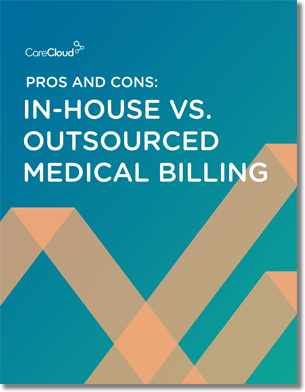Denied claims hurt the financial health of a practice. According to research, the average claim denial rate has increased by 23% as compared to four years ago. This is concerning. Denied claims incur a loss in revenue, affecting the practice’s finances. This is mostly due to incorrect submission of claims or denial management. Providers need to assess their claim submission strategy and look for the common reasons their claims end up getting denied. This article aims to highlight the most common mistakes in denial management so that your practice can avoid them in the future.
What is Claim Denial Management?
Claim denial management is the process of tracking and resolving denied claims. Denial management helps providers mitigate the risks of future denials, ensuring all claims get accepted by the relevant payer. Claim denials usually occur when claims are not submitted according to standards. There can be many reasons a claim gets denied, such as incomplete information, coding errors, or duplicate bills. Claim denials lead to delays in payment, revenue loss, and administrative burdens.
In order to maintain a healthy cash flow, practices must ensure their claims are being submitted accurately, and if they are denied, the claim denials are submitted properly. This process is handled by a denial management team. The team analyzes denied claims to see if there is a pattern in previous denials and to ascertain any errors in the claim submission process. This helps practitioners avoid repeating the same mistakes over and over again.
Common Mistakes to Avoid in Denial Management
Submitting Non-specific Claims
Being specific in your coding is a great way to avoid claim denials. This means that your medical billing and coding team needs to code to the highest level of specificity possible in order to make sure the claim doesn’t get denied. This requires clear communication between the coders and billers in the team.
Messy Claims
Messy claims are a problem because they make it difficult for the payer to scan them properly. When you are submitting your claim, make sure the claim form is readable to avoid claim denials.
Duplicate Bill
Sometimes, practices accidentally submit duplicate claims, which get denied because the claim processing system checks all received claims for duplicates. Duplicate claims are either exact duplicates or suspect duplicates. However, some claims might just seem to be duplicated. If the service is properly coded with the proper condition codes or modifiers, the claim will be recognized as a unique payable service rather than a duplicate.
Services Not Covered
One thing you have to keep in mind when filing claims is making sure to verify insurance eligibility, as insurance information keeps changing. Make sure you understand the patient’s plan and the services you offer. Before providing any services or procedures that require pre-certification under the terms of a member’s plan, the first thing you should verify is everything. You also need to verify that the service you provide is covered by the patient’s plan, that their coverage has not expired, and that their maximum benefit has not been met.
Claims Below Payer Standards
Before filing claims, make sure you understand and meet the submission criteria of the payer to avoid any denials. Some payers are stricter than others, so analyze your past denial codes to see which payers deny your claims the most.
Coding Issues
Providers can encounter different types of coding issues when submitting claims. When providers use an outdated codebook like CPT, ICD-9, HCPCS, or Superbill, your claim will be denied. Another common mistake made by payers is insufficient documentation. If the services you provided are not documented, carriers will assume you have not performed them. So, it is important to ensure your services are documented.
Submitting Incomplete Claims
According to Medical economics, two of the 15 Common Reasons for Claim Denials include submitting claims without information or a modifier. The medical billing and coding staff must make sure they submit accurate and complete claims filled with all the required information. It is a human mistake to miss out on some fields on the form; thus, it is recommended to double-check all your information.
Untimely Claims
Submitting your claim on time is as important as submitting a complete claim. If you don’t submit your claim on time, it is highly likely that it will be rejected. This time could be as short as 90 days from the date of the service provided. To make sure you don’t miss deadlines for claim submission, keep a schedule of all filing windows. It is also advised to document your claim submission and the payer’s receipt so as to avoid any event where the payer tells you your claim was submitted late.
Upcoding or unbundling
Upcoding refers to the process of using CPT codes to bill a health insurance payer for a higher-paying service than the one provided. Upcoding is illegal and is considered a fraudulent practice. Thus, it is critical for providers to refrain from upcoding.
Unbundling is a term used to describe improper coding that is illegal. When billing separately for each surgery or test, some healthcare providers may charge more than the reimbursement rates by adding modifiers. Again, this is another practice you need to avoid. It is recommended to learn about the different modifiers and how to use them correctly.
Conclusion
Understanding the most common mistake made while submitting claims helps providers avoid repeating the same mistakes in the future. Claim submission can be a task that requires precision, as one mistake might lead to revenue loss. Thus, it is important that you choose a team that understands the intricacies of this job. CareCloud’s medical billing software helps you submit clean claims that will help you increase practice revenue, reduce claim denials, and maximize reimbursements.



